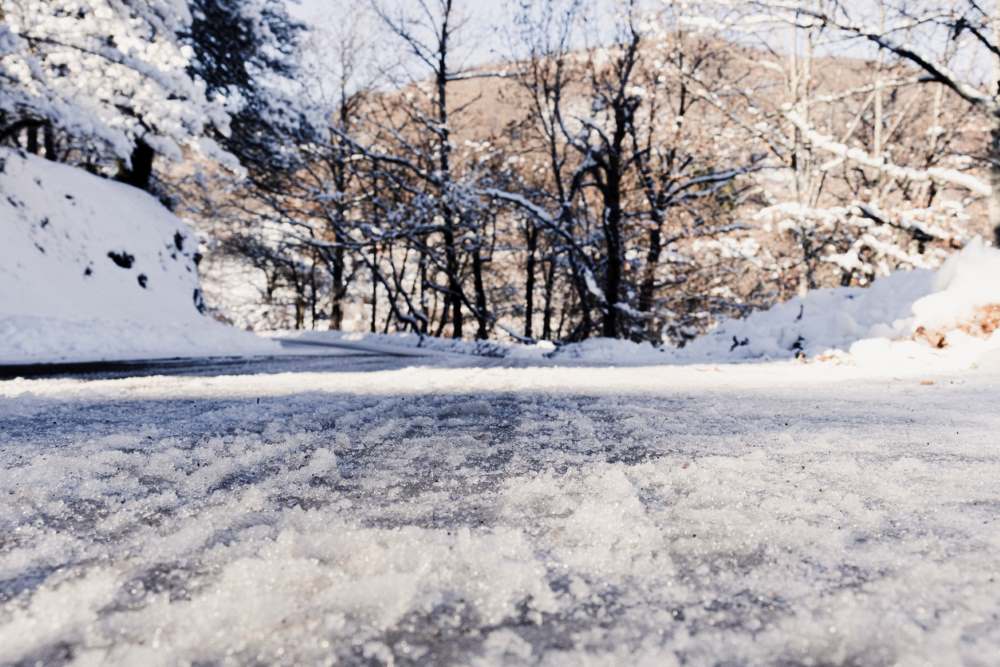
Preparing teenagers for safe winter driving can be challenging. By covering various aspects such as winter driving skills, vehicle preparation, emergency kits, and handling emergencies, you'll be better equipped to guide your teenagers as they navigate winter roads.
Discussing Winter Driving Skills
Driving in winter conditions requires a unique set of skills that go beyond regular driving. Teenagers need to understand the importance of reducing speed and maintaining a safe following distance to prevent accidents, especially when driving among 18-wheelers, as they are more likely to cause significant damage due to their size and weight. Additionally, they should be taught how to steer and brake gently to avoid skidding on icy roads.
An essential winter driving skill is knowing how to regain control of the vehicle if it starts to slide. Teen drivers should practice turning into the skid and gradually accelerating to reorient their cars. These actions can be lifesaving and prevent severe accidents from occurring.
Instructing teenagers on how to interpret road conditions and weather forecasts is another vital skill. By understanding the current and upcoming weather patterns, they can make informed decisions about when to drive or stay home. This knowledge helps mitigate risks and ensures safer winter driving experiences.
Preparing Family Vehicles for Winter Conditions
Many drivers choose all-season tires for their vehicles; however, if you live in a snow and ice-ridden area, investing in snow tires is best. Snow tires are designed to provide better traction and control during adverse weather conditions. It's crucial to explain this to teenagers, so they appreciate the importance of having the right tires for winter driving.
Regular vehicle maintenance is also vital during the winter months. Ensure that your vehicle's brakes, battery, and windshield wipers are in good working condition. Explain to your teenagers that a well-maintained vehicle is less likely to have issues in cold weather, thus preventing accidents.
Another important preparation step is keeping your vehicle's gas tank at least half-full during winter. This prevents the fuel line from freezing and ensures there is always enough fuel to reach your destination safely. Teenagers should also be taught to check fluid levels regularly, including antifreeze, to keep the engine running smoothly.
Making a Winter Driving Emergency Kit
Creating a winter driving emergency kit is an essential precautionary measure. This kit should include items such as a flashlight, blankets, non-perishable food, water, and a first-aid kit. Having these supplies can make a significant difference if you encounter a winter driving emergency.
Additionally, include tools such as a snow shovel, ice scraper, and jumper cables in the emergency kit. These tools can be crucial for getting your vehicle back on the road in snowy and icy conditions. Teenagers should understand the importance of being prepared for the unexpected when driving in winter.
Winter driving conditions result in about 135,000 injuries and 2,000 deaths annually. By equipping your teenager with an emergency kit, you are helping them stay safe in case they get stranded. Explain the contents of the kit and how to use each item so they feel confident handling a winter driving emergency.
Handling Winter Driving Emergencies
Knowing how to handle winter driving emergencies is crucial for any driver, especially teenagers. Teach them to remain calm and assess the situation if they find themselves in a precarious position. This calm approach helps them think clearly and make better decisions to avoid further accidents.
If the vehicle gets stuck in the snow, instruct teenagers to avoid spinning the wheels. Instead, have them try rocking the car back and forth or using sand or kitty litter for traction. These techniques can often help free the vehicle without making the situation worse.
In case of an emergency or breakdown, it's essential to stay inside the vehicle where it's safe and warm. Teenagers should be taught to turn on their hazard lights and call for assistance while waiting for help to arrive. These steps can prevent exposure to harsh weather and reduce the risk of accidents.
Winter driving poses unique challenges, especially for teenage drivers. Teaching them these precautions ensures they are prepared and confident when navigating winter roads!


























